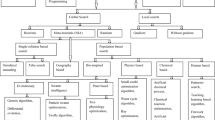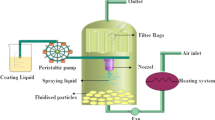Abstract
Processing facilities are normally designed with sufficient flexibility to handle nominal variations. When the process features planned changes in feedstock and products, scheduling is often used to optimize process operation. Proper scheduling may be limited to existing design or may entail retrofitting. Traditionally, economic objectives have served as the primary drivers for the design, retrofitting, and scheduling of industrial processes. Once a base design and scheduling plan have been established, environmental issues are addressed in many cases as an afterthought. As a result of this sequential approach, valuable synergisms and tradeoffs of economic and environmental objectives are often missed. The objective of this study is to develop a new approach to design and scheduling with economic and environmental objectives. Specifically, this study introduces a systematic framework and the associated mathematical formulation for simultaneous process design and scheduling while simultaneously addressing economic and environmental objectives. Therefore, this study establishes two types of proper tradeoffs (a) between design and scheduling and (b) between economic and environmental objectives. The environmental issues pertaining to the parameterized process retrofitting, scheduling, and operation strategies are simultaneously considered along with the environmental impact of these changes. An optimization formulation is developed for the case of project schedule while allowing design retrofitting changes that include new environmental units and modification of design and operating conditions in the process (without new process units). Also, a process model with the appropriate level of relevant details is included in the formulation. The projected schedule is discretized to allow for a multiperiod formulation with algebraic equations. The resulting framework identifies opportunities for synergism between the economic and environmental objectives. It also determines points of diminishing return beyond which tradeoffs between economic and environmental objectives are established. The devised procedure is illustrated with a case study on an oil refinery with scheduling of different products and the design of an environmental system that addresses NO x emission.








Similar content being viewed by others
Abbreviations
- i u :
-
Input stream to process unit
- i v :
-
Input stream to environmental management unit
- j u :
-
Output stream from process unit
- j v :
-
Output stream from environmental management unit
- p :
-
Product
- q :
-
Material
- t :
-
Time
- u :
-
Process unit
- v :
-
Environmental management unit
- w :
-
Waste stream
- EMU :
-
Environmental management units
- INPUT:
-
Input streams
- OUTPUT:
-
Output streams
- P :
-
Product amount
- PERIODS:
-
Operating periods
- Q :
-
Materials
- t h :
-
Time horizon
- U:
-
Process units
- WASTES:
-
Environmental discharges for the process
- \( d_{u}^{\min } \) :
-
Minimum design variable
- \( d_{u}^{\max } \) :
-
Maximum design variable
- Loadenv :
-
Maximum load released of a waste to environment
- \( P_{p,t}^{\rm {Demand}} \) :
-
Demand of product p at tth period
- \( o_{u}^{\min } \) :
-
Minimum operating variable
- \( o_{u}^{\max } \) :
-
Maximum operating variable
- Z env :
-
Maximum allowable release of a waste to environment
- \( C_{p,t}^{\rm product} \) :
-
The unit selling price of product p during period t
- d :
-
Design variable
- \( F_{{i_{u} ,t}} \) :
-
Flowrate for the i u th input to the process unit
- \( F_{{i_{v} ,t}} \) :
-
Mixed flow rate to EMUs
- \( G_{{j_{u} ,t}} \) :
-
Flowrate for the j u th output from the process unit
- \( g_{{j_{u} ,i_{v} }} \) :
-
Flowrate assigned from source j u to destination i v during period t
- I v :
-
A binary integer variable designating the presence or absence of the vth EMU
- \( {\hbox {Net}}\_{\hbox {Gen}}_{u,q,t} \) :
-
Generation of material q
- \( p_{{j_{u} ,p,t}} \) :
-
Flowrate assigned from j u to the pth product stream
- p :
-
Operating variable
- POC t :
-
The plant operating cost during period t
- \( r_{{j_{v} ,i_{u} ,t}} \) :
-
Flowrate recycled back to the process to the i u th input of the uth unit
- TACEMU :
-
The total annualized cost of the environmental management system
- W w :
-
Flowrate of the wth waste stream
- \( w_{{j_{v} ,w,t}} \) :
-
Flowrate assigned to the wth waste stream
- W w,t :
-
Flowrate of the wth waste stream during the tth period
- \( X_{{i_{u} ,q,t}} \) :
-
Composition of material q in the input stream i u to the process unit
- \( Y_{{j_{u} ,q,t}} \) :
-
Composition of material q in output stream j u th
- Z w,q :
-
Composition of the qth pollutant in the wth waste stream
References
Al-Mutairi EM, El-Halwagi MM (2009) Integration method for considering scheduling in design of heat exchange networks. Appl Therm Eng (in press)
Al-Mutairi EM, Suardin J et al (2008) An optimization approach to the integration of inherently-safer design and process scheduling. J Loss Prev Process Ind 21(5):543–549
Al-Thubaiti M, Al-Azri N et al (2007) Integrated techniques for low-cost process debottlenecking. Hydrocarb Process 86:161–168
Bamufleh H (2002) Relating gasoline production and coke formation to feedstock composition and operating conditions in fluid catalytic cracking. Chemical engineering. PhD, The University of Tulsa, Tulsa
Baukal CE, Hayes R et al (2004) Nitrogen oxides emissions reduction technologies in the petrochemical and refining industries. Environ Prog 23:19–28
El-Halwagi MM (1997) Pollution prevention through process integration. Academic Press, San Diego, CA
El-Halwagi MM (2006) Process integration. San Diego, CA, ELSEVIER Inc.
Floudas C (2004) Continuous-time versus discrete-time approaches for scheduling of chemical processes: a review. Comput Chem Eng 28:2109
Ierapetritou MG, Floudas CA (1998a) Effective continuous-time formulation for short-term scheduling. 1. Multipurpose batch processes. Ind Eng Chem Res 37(11):4341–4359
Ierapetritou MG, Floudas CA (1998b) Effective continuous-time formulation for short-term scheduling. 2. Continuous and semicontinuous processes. Ind Eng Chem Res 37(11):4360–4374
Jia Z, Ierapetritou M (2004) Efficient short-term scheduling of refinery operations based on a continuous time formulation. Comput Chem Eng 28(6–7):1001–1019
Jia Z, Ierapetritou M et al (2003) Refinery short-term scheduling using continuous time formulation: crude-oil operations. Ind Eng Chem Res 42(13):3085–3097
Kelly JD, Mann JL (2003a) Crude oil blend scheduling optimization: an application with multimillion dollar benefits—Part 2. Hydrocarbon Process 82(7):72
Kelly JD, Mann JL (2003b) Crude oil blend scheduling optimization: an application with multimillion dollar benefits—Part 1. Hydrocarbon Process 82(6):47
Lee KH, Park HI et al (2001) A novel nonuniform discrete time formulation for short-term scheduling of batch and continuous processes. Ind Eng Chem Res 40(22):4902–4911
Luo C, Rong G (2007) Hierarchical approach for short-term scheduling in refineries. Ind Eng Chem Res 46(11):3656–3668
Mendez CA, Cerda J (2002) An efficient MILP continuous-time formulation for short-term scheduling of multiproduct continuous facilities. Comput Chem Eng 26(4–5):687–695
Mendez CA, Cerda J et al (2006) State-of-the-art review of optimization methods for short-term scheduling of batch processes. Comput Chem Eng 30(6–7):913–946
Moro LFL, Pinto JM (2004) Mixed-integer programming approach for short-term crude oil scheduling. Ind Eng Chem Res 43(1):85–94
Raspanti CG, Bandoni JA et al (2000) New strategies for flexibility analysis and design under uncertainty. Comput Chem Eng 24(9–10):2193–2209
Richard R (1999) Case study: choosing selective catalytic reduction as a preferred technology for the destruction of NOx. Environ Prog 18:260–266
Shaik MA, Floudas CA (2007) Improved unit-specific event-based continuous-time model for short-term scheduling of continuous processes: rigorous treatment of storage requirements. Ind Eng Chem Res 46(6):1764–1779
Acknowledgment
E. M. Al-Mutairi thanks King Fahd University of Petroleum & Minerals (KFUPM) for its financial support.
Author information
Authors and Affiliations
Corresponding author
Rights and permissions
About this article
Cite this article
Al-Mutairi, E.M., El-Halwagi, M.M. Environmental-impact reduction through simultaneous design, scheduling, and operation. Clean Techn Environ Policy 12, 537–545 (2010). https://doi.org/10.1007/s10098-009-0259-7
Received:
Accepted:
Published:
Issue Date:
DOI: https://doi.org/10.1007/s10098-009-0259-7




